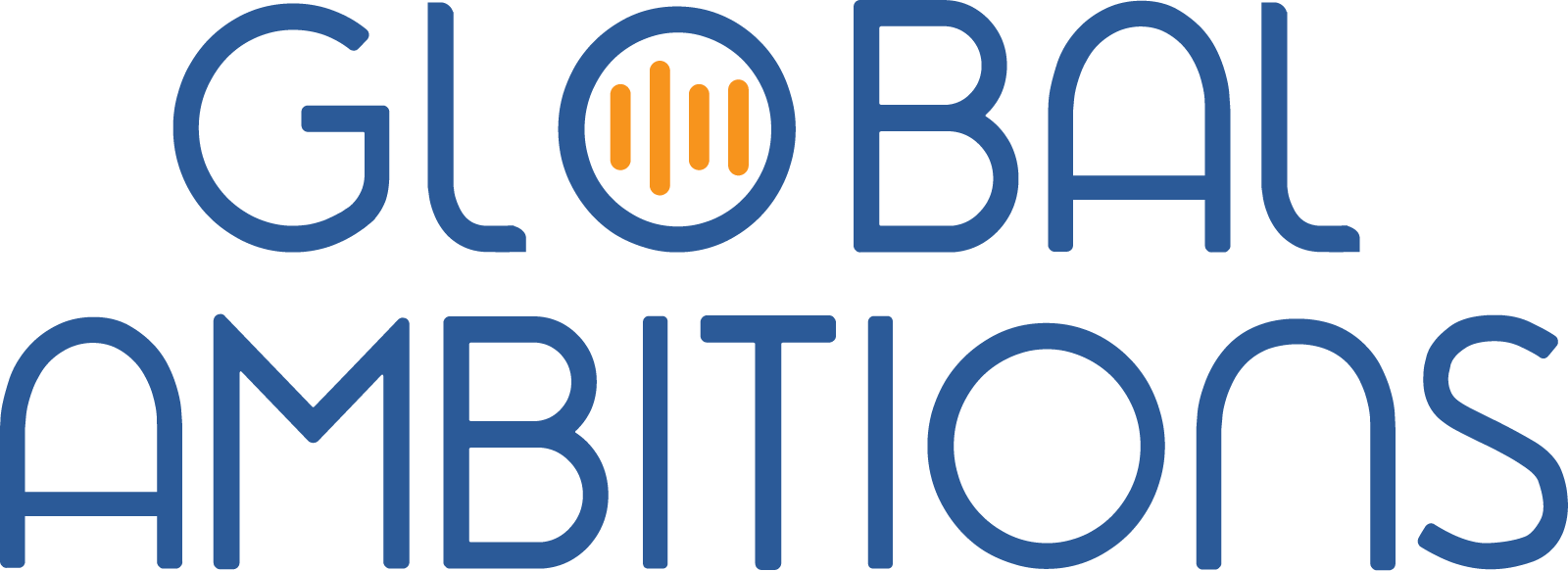Episode 4: With Francesca Di Marco, International Ops at Pinterest
This is the transcript for Episode 4 of Global Ambitions released on February 1, 2021.
Antoine Rey 0:15
Hello, I’m Antoine and I’ll be your host today for this global ambition podcast episode. This is 15 minutes of localization and international go to market insights that are short, actionable, and sharp. My guest today is Francesca Di Marco and Francesca runs International Operations at Pinterest. And today our topic is around international go-to-market strategy. Francesca. Welcome. Can you please briefly tell us about your role at Pinterest, please?
Francesca Di Marco 0:47
Thank you. Thanks for having me. I currently lead a localization program at Pinterest and have been in the localization industry for 15 years. I’ve been covering different functions. But at Pinterest, I joined the company to build a team that could support the entire business. So there is a centralized team. And we are currently localizing product. We own international functionality and linguistic QA. We localize marketing and sales assets. And we are also in charge of global GTM, go-to-market strategy.
Antoine Rey 1:26
And so talk about that. That transition from doing just localization and translation, to getting to go-to-market international strategy. What were the main challenges for you to get to that stage? Or what are the main challenges to get there?
Francesca Di Marco 1:43
The main challenge that companies, in general, is when we scale, we standardize processes across markets. And that also means that we lose some of the local customers in return for global efficiency. Scaling justifies losing some of that global touch. And so that was the main challenge at the very beginning when I joined the company.
Francesca Di Marco 2:07
Little by little, we managed to be influential enough to move to a different style of localization. And I think that our journey started with what I would define marketing, localization. Localization marketing, which is where we landed, and by marketing localization, I mean, you know, the process by which an experience is created to please other markets and to be enjoyed by other markets. Whereas where we landed now is localization marketing. So it’s a marketing strategy that leverages localization in order to achieve growth and to achieve certain results. And so a number of systems and processes had to change in order to support the strategy. And this, I think, is where we landed now, which is very satisfactory.
Antoine Rey 2:56
And do you act as a bridge between the localization and the market? So how does that work?
Francesca Di Marco 3:01
Yeah, so the localization team is the bridge between global markets and the teams that are based here in the US. So we bridge between the business needs and the requirements and our local markets experts. And we report back to the PM teams, customer marketing team, and marketing team over here. So every time we’re about to launch a GTM and we are about to discuss a strategy for a GTM.
Francesca Di Marco 3:25
Of course, we collect data from our global market from our local markets, and we want to make sure that the message is fine-tuned in a way that is going to work for all these audiences. After all, a go-to-market strategy is a way in which a company brings a product to market and so generally it includes a business plan, outline, target, and a marketing plan that says strategy as each product and market are different. And this is what we are reporting back to our teams over here. So each GTM strategy needs to be thoroughly thought out and mapped out and each market is resolving a specific problem and so we need to find specific solutions for those markets.
Francesca Di Marco 3:40
So what happens is we collect this inbound input from the local market, we report back to the teams here in the US. And then once the message is created here, what we do is, number one, we want to make sure that we understand exactly what the message is about, what are we targeting? What’s the audience? We show all the digital assets to international marketing managers. So we want to make sure that they understand exactly what the message is going to be, and what assets are going to be available for the GTM.
Francesca Di Marco 3:40
And then we decide what’s the tear for each of the international markets. And the localization team mediates that kind of function. So the marketing and the brand team and the international marketing management team, and we decide what’s the tier for international markets, meaning what’s the magnitude of the TTM in each of their markets? What are these digital assets that need to be used in those markets? And once the requests are ready, we report back to the team over here and then we build those GTM. And each GTM is basically adapted for each market.
Francesca Di Marco 3:40
Imagine launching an educational campaign for content creators on Pinterest. We know that content creators are different in each market and we need to address them using a different voice using a different message. And so that’s exactly what we’re going to be about. First, we need guidance from our local marketing managers. Second, we need to align with the company, with the company branding, and third, we need to adapt all these digital assets for the local market
Antoine Rey 4:47
And do you retrofit some features into the product based on the inputs from the local markets?
Francesca Di Marco 6:02
That’s exactly what we do. And we would basically split the content into two chunks. There is a message that is universal, and that’s a message that we can translate. So talking in sheer localization terms, we can do translation and a review on that universal message. And then there is more of a local message that needs to be adapted and sometimes copywritten. And when it comes to tactics, localization tactics, that’s when we use either copywriters or transcreators to create that specific model and message for a market.
Francesca Di Marco 6:36
Talking now about globalization tactics. It’s a hybrid model where we can do translation on some parts of the map. And then we can mix it up with copy created ad-hoc for those markets. This is How we try to create a hybrid scalable solution where we can leverage what has been already created in the US, but making it absolutely relevant for international markets.
Antoine Rey 7:04
I’m presuming in that process, things must go wrong sometimes. Can you share with the audience the common pitfalls that you’ve seen? And maybe that can be avoided?
Francesca Di Marco 7:16
There are a lot of challenges that we are still trying to circumnavigate when we cannot find the solution. Most of the time we want to test the message before we actually go out with a GTM on a big marketing splash. And that sometimes is not possible to do it with international markets as well. It’s not possible. It’s hard to coordinate and organize. Sometimes, for example, we want to optimize our ads based on the results of those tests before implementing them on a wide scale. And that’s hard as well to do it for international markets.
Francesca Di Marco 7:52
The other big challenge is metrics and how we measure success. And that’s important because it helps us strategize next time in a way that is going to make our GTMs more and more effective. And sometimes like measuring or tracking metrics becomes very complicated when a GTM has been built on ad hoc. And so metrics that we are tracking must be different and on a different audience and so it’s really hard then to create this one comprehensive dashboard that is illustrating how GTM on the same product actually works on a different array of markets with different messaging. With you know, like a slightly different number of features and so on. So that’s complicated.
Antoine Rey 8:37
You guys seem to be well organized. I’ve seen organizations that go in after say 20 markets in one go. You guys seem to be focusing on a few key markets at a time, or is that correct? Is there a reason behind that strategy?
Francesca Di Marco 8:52
We have different tiers for markets. We have markets where we monetize and where we have a presence. And we have markets where we wanted to but we don’t have a presence. And then we have markets where we do not monitor and we don’t have a team yet. Based on that tiering, we structure our GTMs as well. And the tiering is extremely important because it really determines how many resources we can deploy. So are we gonna have a PR message or we’re gonna have like marketing campaigns and media marketing campaigns. And are we gonna have a TV campaign and so on and so forth. Based on the tearing of our markets, we have a different GTM strategy.
Francesca Di Marco 9:28
For a consumer product, one thing that I would like to point out is that it is a mandate of the company that whenever we launch, this will be launched at a global level. And so this puts our team in a very central and crucial position because we are in charge of making things happen with very tight timelines and making things happen in a way that is actually relevant for all these markets. Imagine the consumer product we’re launching in 36 languages. And so we want to make sure that the message that we’re putting out there is working in all of those markets. And that needs to happen, and the customization of that message and that GTM needs to happen in a very short time. So a very challenging time.
Antoine Rey 10:18
Can you share with us as well, some of the successes that you’ve seen with your approach and that bridging between localization and go-to-market, so that the people that are listening to us can try and replicate some of the good practices that they should follow?
Francesca Di Marco 10:35
I want to talk about the most recent launch from Pinterest. Like we launched Pinterest predicts and for our business partners and we launched into eight locales, and we got a success that was really unprecedented and the main reason for such for that success was exactly the hybrid localization of the launch. So what we did is basically, we teamed up with the Insights Team, Marketing Team, Brand, and basically we made each asset absolutely local. So we changed not just the language, sometimes the messaging but we change the insides. We changed the data, the metrics. And so our advertisers or business partners were looking at absolutely something that was hyper-localized for their market. They didn’t notice that the content was originally drafted for the US market. For example.
Antoine Rey 11:36
That’s a very big achievement in that case and did you actually create the content in-country or was that actually localized?
Francesca Di Marco 11:43
We deploy the synergetic approach as I was mentioning before. So we translated the universal message and recreated a local message. It was a mix and match of something that resonated globally that was simply translated. Which was paired with local insights, local data, local markets, local partners, and local images so these digital assets were absolutely hyper-localized. But across all those markets was the fact that the leadership strategy was the same. And of course, brand was the same.
Antoine Rey 12:28
And the reason you’re launching into eight markets… are you going to be expanding that same feature that’s been successful in those eight markets into the 35 markets then as well?
Francesca Di Marco 12:40
That will be a big goal that we have in mind, but yes,
Antoine Rey 12:45
That’s a lot of work to adapt to all of that content into all of those specific markets and maybe why you launched just in the 8 markets first. Or was that test?
Francesca Di Marco 12:55
That was not a test. We decided to go for eight markets at one time because we have cracked the key to success. I’m 100% confident that we can scale operations to a bigger number to a larger number of markets moving forward.
Antoine Rey 13:10
Great. Well, listen, Francesca. Thanks very much for your input. I’m sure this is going to be very valuable information for a lot of our listeners in this podcast. My last question to you. Would you be able to recommend someone to participate in Global Ambitions in the future?
Francesca Di Marco 13:27
I would love to hear Tim Arata talking about what he’s been doing concerning localization departments. I would be very interested and intrigued in hearing what he has been learning.
Antoine Rey 13:41
Well, we’ll make sure to get in touch as he’s experienced on the client-side, as well as on the consulting side. I’m sure there’d be a lot of information that would be interesting for listeners as well. Thanks very much then, and we’ll talk to you very soon.

Francesca Di Marco
International Ops at Pinterest




